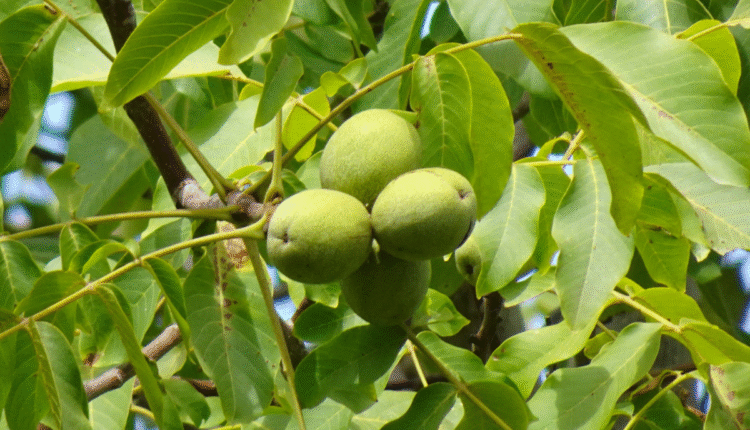How to Grow Walnut: Many farmers look for crops that need less care but offer steady returns. Walnut trees are one of the best options for that. They grow well in hilly areas with cold winters and warm summers. Once established, they keep producing high-value nuts and timber for decades.
Walnuts are in demand in both local and global markets. People use them in sweets, snacks, health foods, and baking. The price of quality walnuts stays high year-round. This makes walnut farming a strong business opportunity if done the right way.
Best Conditions for Walnut Trees
Walnut trees need the right environment to grow well. They prefer:
Cool winters and mild summers
Soil that drains well and is rich in organic matter
A pH range between 6.0 and 7.5
Open, sunny land without shade from tall trees or buildings
Avoid areas where water collects or where the land is too sandy or clay-heavy. If the roots sit in water for too long, the tree can rot. You can test the soil before planting and add compost or lime to adjust the pH.
Planting Guide (Step-by-Step in Pointers)
Buy grafted or budded walnut saplings from a certified nursery
Choose varieties suited for your local climate (like Chandler, Hartley, or Kashmir Black)
Dig planting pits 3×3 feet wide and 2.5 feet deep
Mix the removed soil with compost or well-rotted manure
Place the sapling upright in the center of the pit
Fill the pit with soil, press gently, and water well
Keep 25 to 30 feet of space between trees to allow full growth
Use mulch around the base to retain moisture and control weeds
Install tree guards to protect from animals in the first few years
Care in the Early Years
Newly planted walnut trees need proper care in the first 3–5 years. Water them regularly, especially in dry seasons. Avoid overwatering. Once the tree is about 3 years old, you can reduce the frequency.
Training and pruning are key. Select a strong central stem and remove weak or crossing branches. Do this during the dormant season (usually in late winter). Proper pruning improves shape, airflow, and nut quality.
Use fertilizers once a year in spring. A mix of nitrogen, phosphorus, and potassium helps growth. Don’t overuse chemical fertilizers. Organic manure or compost works well too.
Common Pests and Diseases
Walnut trees face a few threats:
Aphids
Mites
Walnut blight
Root rot
Check your trees regularly. Use neem oil or mild insecticides when needed. Always spray in the evening and avoid flowering season to protect bees.
Harvesting and Post-Harvest Work
Walnut trees start producing nuts 5 to 7 years after planting. Grafted trees often yield earlier than seed-grown ones. By 10 to 12 years, they reach full production.
The nuts are ready for harvest when the green outer cover splits. Don’t wait too long, or they’ll fall and rot. After picking, remove the husk and wash the nuts. Then dry them under shade for 3 to 4 days.
Drying improves taste and storage life. Never dry under direct sunlight as it can damage the kernel. Store the nuts in cool, dry places in jute or mesh bags.
Market Potential and Timber Value
Walnuts fetch a high price in markets. You can sell:
In-shell walnuts (lower rate, less labor)
Shelled kernels (higher rate, more labor)
Kernels sell better if they are clean, dry, and full. You can also supply to wholesalers, retailers, or food processors. In the long term, the tree itself becomes valuable. Mature walnut wood is used in furniture, carvings, and gunstocks. One fully grown tree can sell for a good price just for its timber.
Why Walnut Farming Is Worth It
Long-term crop with 40+ years of production
High demand and strong market price
Dual income: nuts + timber
Low maintenance once trees mature
Suitable for hilly and cold regions
If you’re a farmer with land in a suitable area, walnut farming is a smart way to build long-term wealth. Start with 10 to 20 trees and learn by doing. As the trees grow, your income will grow with them.
Invest in good saplings, care for them in the early years, and be patient. The rewards will come, year after year
Contact us – If farmers want to share any valuable information or experiences related to farming, they can connect with us via phone or whatsapp at 9599273766 or you can write to us at “[email protected]”. Through Kisan of India, we will convey your message to the people, because we believe that if the farmers are advanced then the country is happy.
You can connect with Kisan of India on Facebook, Twitter, and Whatsapp and Subscribe to our YouTube channel.



